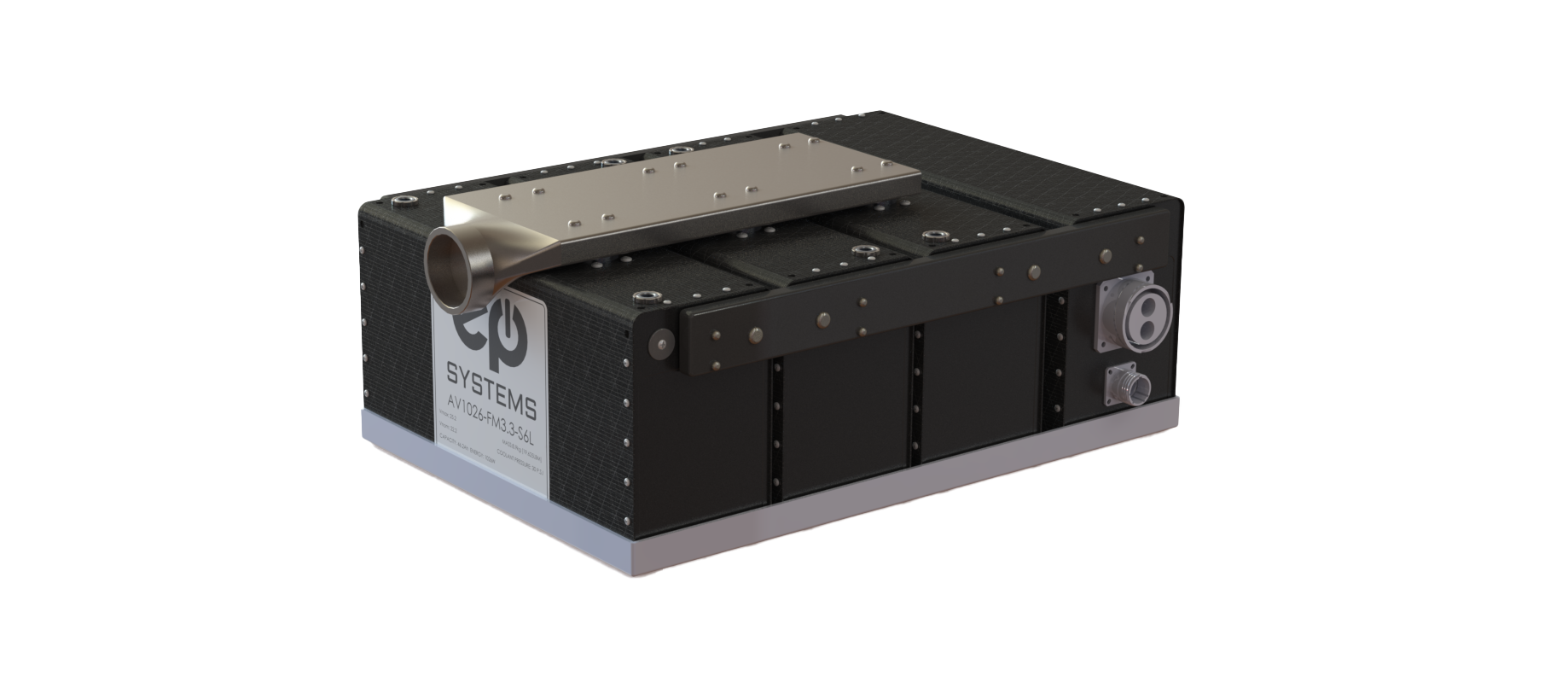Click Here to View This Page on Production Frontend
Click Here to Export Node Content
Click Here to View Printer-Friendly Version (Raw Backend)
Note: front-end display has links to styled print versions.
Content Node ID: 419054
Electric Power Systems (EP Systems) this week launched its new Epic family of electric batteries for aircraft. The U.S. company aims to get approval for the three battery modules under a FAA and EASA technical standard orders by the second quarter of 2022 and says they will be suitable to power eVTOL and electric fixed-wing aircraft of various sizes, including existing models that could be retrofitted.
The new Epic battery family consists of the Energy, Power, and Ultra modules. All feature thermal runaway safety protection against overheating and a packaging overhead amounting to between 20 and 25 percent of the battery’s modular mass. The Energy and Power units are designed for a service life of over 2,000 cycles, based on an 80 percent depth of discharge rate, while the Ultra is projected to reach 7,500 cycles.
The Epic Energy unit will have a power density of 205 Wh/kg and is primarily intended to power small trainers and eVTOL aircraft. It will have discharge and charge rates of, respectively, 10C and 3C.
The 180 Wh/kg Epic Power battery is intended for eVTOL and hybrid-electric aircraft, with a 30C discharge rate and a 3C charge rate. The 115 Wh/kg Ultra unit is intended for use with hybrid propulsion systems and auxiliary power units, with discharge and charge rates of, respectively, 70C and 4C.
The C rate is the rate at which the battery discharges power and recharges in relation to its maximum capacity. A 10C discharge rate means that this will discharge in one-tenth of an hour (6 minutes), while 30C equates to one-thirtieth of an hour and 70C one-seventieth of an hour. For a battery with a 3C charge rate, it would take one-third of an hour (20 minutes) for it to charge at full current.
According to EP Systems, the technology offered by the new Epic range of batteries represents significant advances for electric propulsion in terms of key challenges including safety and certification, cost, weight, and infrastructure requirements. Features include new thermal containment using venting and battery management systems to prevent fires or explosions. The batteries have been designed to be platform-agnostic making them easy to integrate with a wide variety of aircraft architectures, with the ability to mount them in any orientation.
The units include data and communications connections so that the performance of each battery can be logged in detail and added to operators’ fleet-wide databases. They also feature patented module-to-module power connectors that do away with the need for cables, as well as a ruggedized, temperature-resistant casing that avoids the need for firewalls.
“Our modular platform allows aircraft designers the ability to create innovative new airframe concepts as well as revitalize legacy airframes,” said EP Systems CEO Nathan Millecam. By the end of 2021, the company aims to supply some early examples of the new batteries to several undisclosed customers for test and development purposes.
EP Systems was founded in February 2016 and in September 2019 received further Series A funding round investments from Boeing and aircraft engines group Safran, which has been expanding its activities in electric propulsion. The company, which now has over 70 employees, is based in North Logan, Utah, and also has an innovation center in Los Angeles.
The company says it is working on electric aviation programs for customers including Boeing, Bell, Safran, and Embraer. In addition to the aerospace and defense sectors, it also produces energy storage, propulsion, and fast-charging stations for automotive, marine, and industrial traction sectors.
